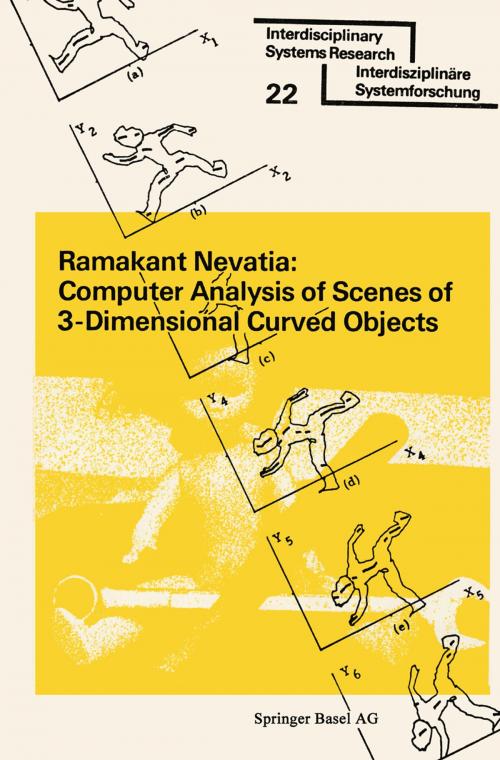Computer Analysis of Scenes of 3-Dimensional Curved Objects
Kids, Natural World, Nonfiction, Reference & Language, Education & Teaching, Science & Nature, Science| Author: | NEVATIA | ISBN: | 9783034852067 |
| Publisher: | Birkhäuser Basel | Publication: | December 20, 2013 |
| Imprint: | Birkhäuser | Language: | English |
| Author: | NEVATIA |
| ISBN: | 9783034852067 |
| Publisher: | Birkhäuser Basel |
| Publication: | December 20, 2013 |
| Imprint: | Birkhäuser |
| Language: | English |
1.0 2 The attention then turned to the problem of "Body separation", i.e. separation of occluding bodies in a scene (See [Guzman), [Falk), and [Waltz)). Grape ([Grape)) combined the separation of bodies with recognition, by removing parts of the scene recognized as belonging to a known body. All of these techniques were designed to work with polyhedral objects only, and extensively use the properties of edges and vertices. Though some impressive results have been reported ([Waltz], [Grape)), and perhaps some useful abstractions can be made, the specific techniques used fail to generalize to a wider class of objects. Among previous work on curved objects, B.K.P. Horn ([Horn)) presented techniques for extracting three dimensional depth data from a TV image, using reflection characteristics of the surface. Krakauer ([Krakauer]) represented objects by connections of brightness contours. Ambler et al ([Ambler)) describe experiments with simple shapes, including curved objects, using relations within a two-dimensional image. However, none of these efforts really addresses the problem of "shape" representation and description. Work on outdoor scene analysis is also concerned with non-polyhedral objects ([Bajcsy], [Yakimovsky]), but again no attention has been paid to shape analysis.
1.0 2 The attention then turned to the problem of "Body separation", i.e. separation of occluding bodies in a scene (See [Guzman), [Falk), and [Waltz)). Grape ([Grape)) combined the separation of bodies with recognition, by removing parts of the scene recognized as belonging to a known body. All of these techniques were designed to work with polyhedral objects only, and extensively use the properties of edges and vertices. Though some impressive results have been reported ([Waltz], [Grape)), and perhaps some useful abstractions can be made, the specific techniques used fail to generalize to a wider class of objects. Among previous work on curved objects, B.K.P. Horn ([Horn)) presented techniques for extracting three dimensional depth data from a TV image, using reflection characteristics of the surface. Krakauer ([Krakauer]) represented objects by connections of brightness contours. Ambler et al ([Ambler)) describe experiments with simple shapes, including curved objects, using relations within a two-dimensional image. However, none of these efforts really addresses the problem of "shape" representation and description. Work on outdoor scene analysis is also concerned with non-polyhedral objects ([Bajcsy], [Yakimovsky]), but again no attention has been paid to shape analysis.















